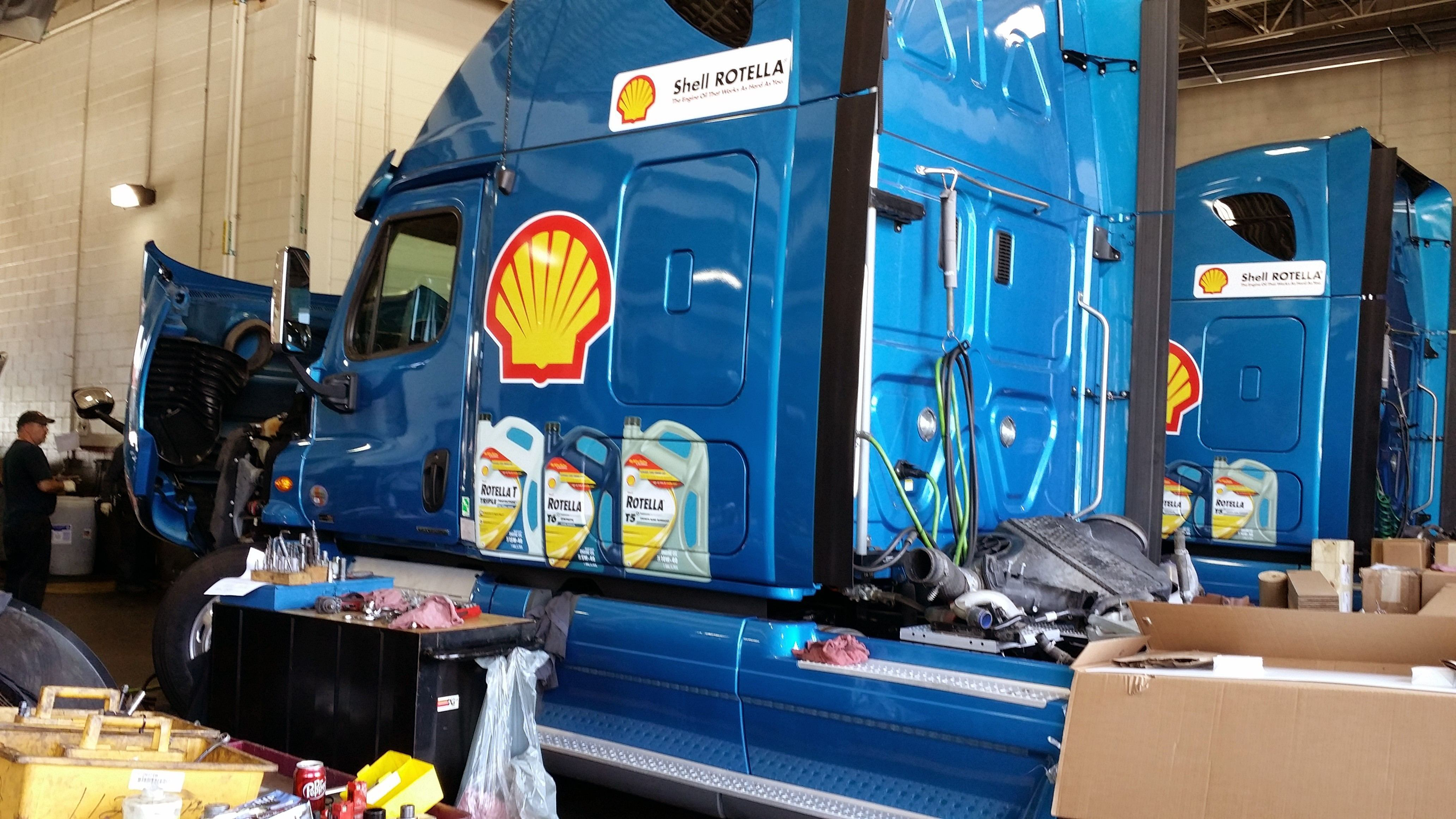 Shell Rotella says it has conducted more than 60 million miles of real-world testing with its CK-4 lubricant and more than 50 million miles of testing with its FA-4 product.
Shell Rotella says it has conducted more than 60 million miles of real-world testing with its CK-4 lubricant and more than 50 million miles of testing with its FA-4 product.
All major North American engine makers are now recommending use of new-generation lubricants, dubbed CK-4 and FA-4 oils, for their new equipment, says Dan Arcy, OEM Technical Manager for Shell Rotella. The oils have also prompted all North American engine makers to extend recommended drain intervals.
What’s more, all but two heavy-duty diesel engine makers are recommending for current-model engines the use of FA-4 oils, the so-called low-viscosity oils that are intended for use in modern engines to boost fuel economy and cut emissions of greenhouse gases.
Arcy, along with Shell’s head of field testing Matt Urbanak, offered an update on the implementation of the new CK-4 and FA-4 oils in a press event held in Santa Barbara, Calif., on Sept. 20.
Paccar, maker of Paccar MX engines and owner of Peterbilt and Kenworth, is not yet recommending FA-4 oils in their current model-year engines, Arcy says. Likewise, Mack and Volvo are not recommending use of FA-4 either. However, Paccar, Volvo and Mack are all recommending use of CK-4 oils for their current model-year equipment, Arcy says.
[rr-story-promotion id=”77722″ align=”center”]
Cummins recommends use of FA-4 oils in 2017-model X15 engines and newer. Navistar also recommends use of FA-4 oils for its new A26 engine and uses FA-4 oils as the factory fill lubricant. Detroit not only recommends use of FA-4 oils in its current-model heavy-duty engines, but for model-year 2010 and later engines.
The new generation of engine oils had been in development for five years before licensing and deployment began in December 2016. The two new oil categories replaced the former CJ-4 category, which had been in use for nearly 10 years.
Engine makers requested the new category in 2011, spurring the American Petroleum Institute, along with oil marketers, truck manufacturers and chemical companies, to develop standards and testing protocol for the new oils. Manufacturers sought the new lubricants as a means to extend drain intervals, improve fuel economy and reduce diesel engine emissions.
The result, CK-4 and FA-4 lubricants, improve oil oxidation stability, boost shear stability and reduce oil aeration, Arcy says. These changes help engine oils last longer and better protect equipment.
CK-4 oils have spurred longer drain intervals, with all North American engine makers extending recommended drain intervals due to the implementation of CK-4 oils.
Cummins extended engine oil drain intervals to 50,000 miles, from 40,000. Navistar extended their drain intervals to 60,000 miles, from 40,000. Detroit now recommends drain intervals of 75,000 miles, from 50,000. Paccar increased its interval by 15,000 miles, to 75,000.
Arcy says the oils’ improvements in oxidation stability was the key to extending drain intervals. Oxidation causes oils to become acidic and thicken, thereby limiting its ability to protect engines over time.
[rr-story-promotion id=”127115″ align=”center”]
Shell also says use of FA-4 oils can improve fuel economy by as much as 2.8 percent.
In recent years, Shell has conducted more than 60 million miles of real-world tests with CK-4 oils, says Urbanak. The company partnered with fleets and OEMs to conduct the tests. Shell has performed more than 50 million miles of real-world testing with FA-4 oils, Urbanak says.
The company has conducted more than 30 engine teardowns, following running the oils for hundreds of thousands of miles in each of those engines. The results showed no drop-off in engine protection qualities from prior-generation oils, says Urbanak.
In fact, CK-4 and FA-4 oils showed improvements in several areas. In addition to better fuel economy and emissions reductions, the tests also showed reduced soot and lead levels in oils, as well as a reduction in engine oil consumption, Urbanak says.









